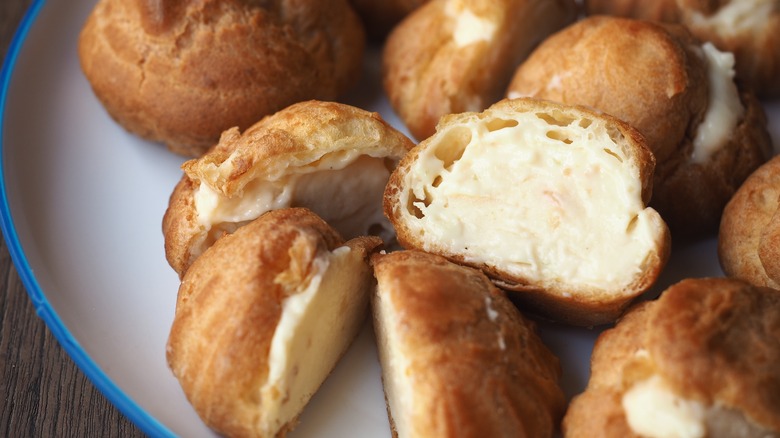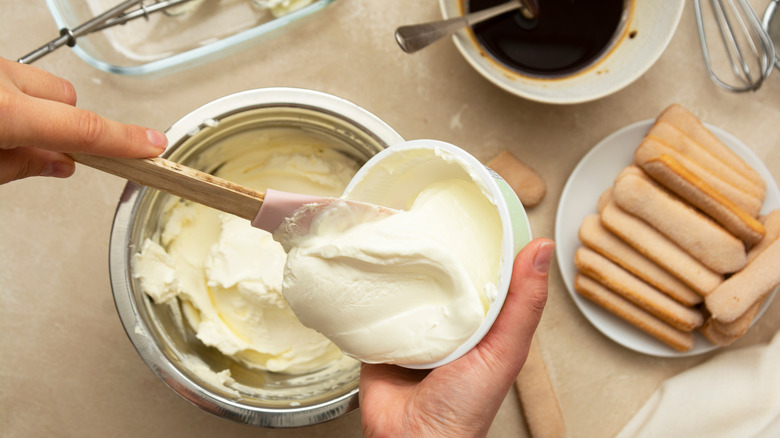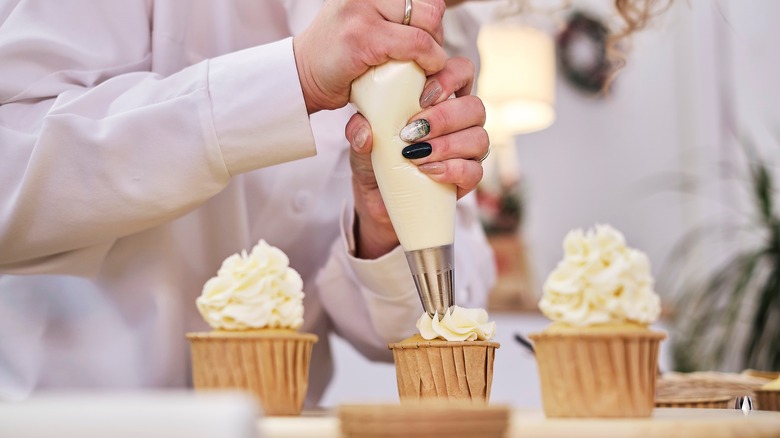The Unclear Origins Of Crème Diplomat, Or Diplomat Cream
Whether you're a seasoned pro or an aspiring pastry chef, you know how important icings and creams are to the finished product. While it might seem like all pastry toppings and fillings are pretty similar, there are actually quite a few differences between them. Bob's Red Mill lists a few common sweet selections, such as buttercream. As the name suggests, buttercream consists of butter and sugar for a decadent way to decorate cakes and other goodies. Then there's ganache, which is heavy cream combined with melted chocolate, which establishes a firm consistency as it dries. Royal icing, which uses egg whites and powdered sugar, is another hard-shell topping perfect for cookies.
Some pastry fillings and toppings can also take you off the beaten path to something a bit more luxurious. Crème diplomat, also known as diplomat cream, is a versatile option that can be used in a variety of ways (per MasterClass). From its subtly sweet flavor to its unique texture, diplomat cream might be just the thing to make your pastries really come to life. And much of its appeal lies in its unique, two-step recipe.
What is diplomat cream and how can you use it?
As explained by Baked Bree, the recipe for diplomat cream consists of two separate recipes combined together. The first is pastry cream, which is very similar in consistency to custard. The next ingredient is whipped cream to lend a bit of lightness and levity to the finished product. Once properly combined, diplomat cream has a variety of applications when it comes to desserts and pastries. Some people add fresh fruit to the cream and enjoy the dessert with a spoon. You can also use diplomat cream to ice cupcakes or as a pastry filling. For example, The Proud Italian recommends using it with traditional French pastries made from choux, like eclairs.
To truly understand the appeal of this dessert filling, one must delve deeper into its individual components. The King Arthur Baking Company features a recipe for pastry cream, also known as Crème Pâtissière. Ingredients include heavy cream, whole milk, egg yolks, butter, sugar, salt, vanilla extract, flour, and cornstarch. Additional flavorings, such as hazelnut or chocolate, can be added according to your preferences. When it comes to whipped cream, Land O'Lakes provides a recipe that calls for heavy whipping cream, vanilla extract, and sugar. While it's easy to see why pastry cream and whipped cream work so well together, the origins of diplomat cream are not quite as clear-cut.
Where did diplomat cream originate?
Like many culinary achievements, the origins of diplomat cream are hard to pinpoint. There is no clear inventor or date of origin, but there are some theories as to where the recipe got its name. According to MasterClass, diplomat cream is similar to Bavarian cream, and many believe the "diplomat" moniker was a way for the French to honor their Bavarian guests.
Additionally, diplomat cream is one of many options pastry chefs use while baking, according to Project Pastry. First are the "foundation creams," which are typically used as the base for more elaborate recipes. In addition to pastry cream, there's also Crème Chantilly, which consists of thickened cream and some kind of sweetening agent, such as sugar. Crème Anglaise is another foundation cream and it's made from egg yolks, sugar, and milk. Then there are the advanced creams, which is the category diplomat cream falls into. Crémeux uses Crème Anglaise as a building block, but it also includes gelatin and a flavoring agent, such as chocolate or fruit. Meanwhile, Crème Chiboust is a mix of pastry cream and meringue. While each cream has distinct uses and applications, all are exceedingly tasty in their own way.


